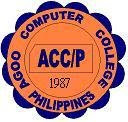UNIT TITLE : PERFORM MENSURATION AND CALCULATION
UNIT CODE : ELC311201
UNIT DESCRIPTOR : This unit covers the knowledge, skills and attitudes and values needed identify, care, handle and use measuring instruments
ELEMENT PERFORMANCE CRITERIA
Italicized terms are elaborated in the Range of Variables
1. Select measuring instruments 1.1. Object or component to be measured is identified
1.2. Correct specifications are obtained from relevant source
1.3. Measuring tools are selected in line with job requirements
2. Carry out measurements and calculation 2.1. Appropriate measuring instrument is selected to achieve required outcome
2.2. Accurate measurements are obtained for job
2.3. Calculation needed to complete work tasks are performed using the four basic process of addition (+), subtraction (-), multiplication (x), and division (/)
2.4. Calculation involving fractions, percentages and mixed numbers are used to complete workplace tasks.
2.5. Numerical computation is self-checked and corrected for accuracy
2.6. Instruments are read to the limit of accuracy of the tool.
3. Maintain measuring instruments 3.1. Measuring instruments are not dropped to avoid damage
3.2. Measuring instruments are cleaned before and after using.
3.3. Proper storage of instruments undertaken according to manufacturer’s specifications and standard operating procedures.
RANGE OF VARIABLES
VARIABLE RANGE
1. Measuring instruments 1.1. Straight edge
1.2. Torque gauge
1.3. Try square
1.4. Protractor
1.5. Combination gauge
1.6. Steel rule
2. Calculation
Kinds of part mensuration includes the following but not limited to
2.1. Volume
2.2. Area
2.3. Displacement
2.4. Inside diameter
2.5. Circumference
2.6. Length
2.7. Thickness
2.8. Outside diameter
2.9. Taper
2.10. Out of roundness
EVIDENCE GUIDE
1. Critical aspect of competency Assessment must show that the candidate:
1.1. selected proper measuring instruments according to tasks
1.2. carried out measurement and calculations
1.3. maintained and stores instruments
2. Underpinning knowledge 2.1. Types of measuring instruments and their uses
2.2. Safe handling procedures in using measuring instruments
2.3. Four fundamental operation of mathematics
2.4. Formula for volume, area, perimeter and other geometric figures
3. Underpinning skills 3.1. Reading skills required to interpret work instruction
3.2. Communication skills
3.3. Handling measuring instruments
3.4. Performing mathematical calculations using the four fundamental operations
3.5. Visualizing objects and shapes
3.6. Interpreting formulae
4. Method of assessment Competency in this unit must be assessed through:
4.1. Observation
4.2. Oral questioning
5. Resource implication 5.1. Place of assessment
5.2. Measuring instruments
5.3. Straight edge
5.4. Torque gauge
5.5. Try square
5.6. Protractor
5.7. Combination gauge
5.8. Steel rule
6. Context of Assessment 6.1 Assessment may be conducted in the workplace or in a simulated environment
Wednesday, June 17, 2009
Subscribe to:
Posts (Atom)
